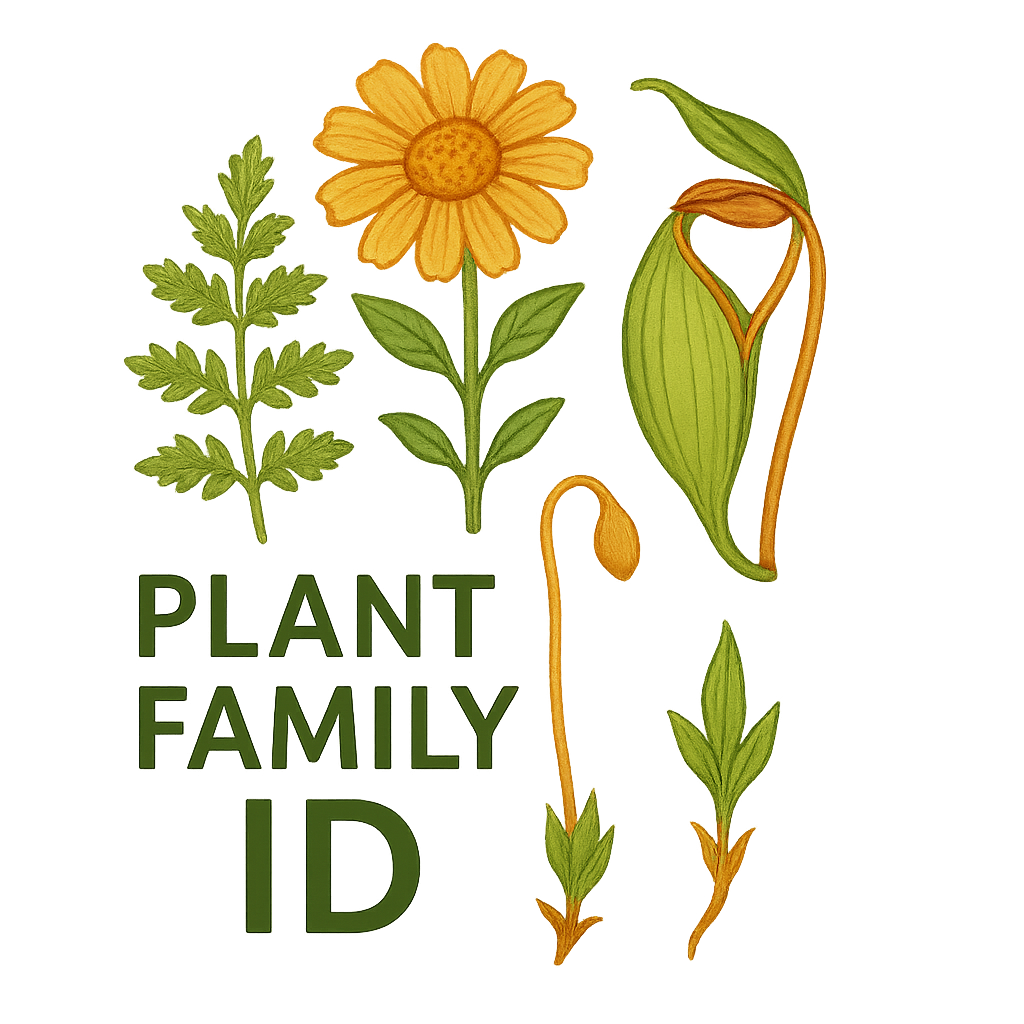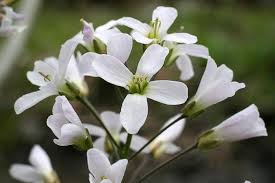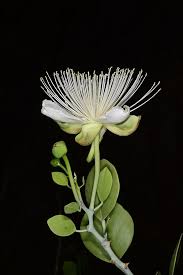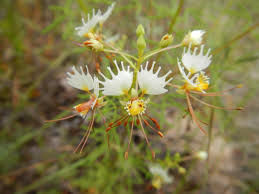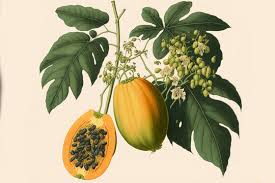Moringaceae
Moringa Family
Moringaceae is a family of flowering plants containing the single genus Moringa, comprising about 13 species of deciduous trees. Placed in the order Brassicales within the Rosids clade, the family is known for its often swollen, water-storing trunks (pachycauls), pinnately compound leaves, slightly zygomorphic flowers, and characteristic long, pendant, capsule fruits often called "drumsticks". Native to arid and semi-arid regions of Africa, Madagascar, Arabia, and India, the family includes the economically important species Moringa oleifera.
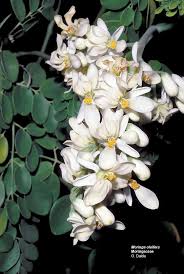
Overview
The Moringaceae family is monogeneric, containing only the genus Moringa with about 13 species. These are trees adapted to dry conditions, often exhibiting pachycauly (swollen trunks for water storage) or developing large underground tubers. Their natural distribution spans from Africa and Madagascar through Arabia to India.
The family is placed within the Brassicales order, known for containing plants that produce glucosinolates (mustard oil glycosides), which give many members of the order (like mustards, cabbages, capers) their characteristic pungent flavor. Moringaceae shares this chemical trait.
The most well-known species, Moringa oleifera (often simply called Moringa, Drumstick Tree, Horseradish Tree, or Ben Oil Tree), is widely cultivated throughout the tropics and subtropics. It is highly valued for its fast growth, drought resistance, and the nutritional and medicinal properties of its leaves, pods ("drumsticks"), seeds (which yield Ben oil and can be used for water purification), and roots (which have a horseradish-like taste). Other species are less known but also possess adaptations to arid environments.
Quick Facts
- Scientific Name: Moringaceae Martinov
- Common Name: Moringa family
- Number of Genera: 1 (Moringa)
- Number of Species: Approximately 13
- Distribution: Disjunct: Africa, Madagascar, Arabia, India; often in arid/semi-arid regions.
- Evolutionary Group: Eudicots - Rosids - Malvids - Brassicales
Key Characteristics
Growth Form and Habit
Deciduous trees, often pachycaulous (with swollen, water-storing trunks) or possessing large underground tubers. Bark often smooth or corky.
Leaves
Leaves are alternate, large, and pinnately compound (1-3 times pinnate), clustered near branch tips. Leaflets are opposite, entire, and often obovate. Stipules are absent or reduced to small glands at the petiole base. Leaves often wilt quickly when detached.
Inflorescence
Flowers are borne in axillary panicles (branched inflorescences).
Flowers
Flowers are bisexual, fragrant, and slightly zygomorphic (bilaterally symmetrical) due to unequal petals and stamens bending downwards. Key features include:
- Receptacle: A short, cup-like hypanthium is present.
- Sepals: 5 sepals, distinct, often reflexed, resembling petals (petaloid).
- Petals: 5 petals, distinct, usually white or yellowish, unequal in size and shape (the uppermost often largest, the lateral pair smaller, the lowest pair smallest).
- Androecium: Typically consists of 5 fertile stamens alternating with 5 sterile stamens (staminodes), arising from the rim of the hypanthium. Filaments are free, often hairy at the base.
- Gynoecium: Ovary is superior, borne on a short stalk (stipitate or gynophore), composed of 3 fused carpels (syncarpous). It is unilocular (one chamber) with 3 parietal placentas bearing numerous ovules. Style is single, slender, with a simple stigma.
Fruits and Seeds
The fruit is a characteristic long, pendant, capsule, often ribbed or angled, resembling a drumstick. It splits open lengthwise along 3 valves to release the seeds. Seeds are often numerous, sometimes winged (for wind dispersal) or wingless, often trigonous (three-angled).
Chemical Characteristics
Presence of glucosinolates (mustard oil glycosides), characteristic of the Brassicales order. These compounds contribute to the pungent taste of roots and other parts.
Field Identification
Identifying Moringaceae involves recognizing their tree habit (often with swollen trunks), large pinnately compound leaves, characteristic flowers, and distinctive long "drumstick" fruit capsules.
Primary Identification Features
- Habit: Trees, often with swollen trunks (pachycaul) or tubers.
- Leaves: Alternate, large, 1-3 times pinnately compound.
- Flowers: Bisexual, slightly zygomorphic, 5 petal-like sepals, 5 unequal petals (often white/yellow), 5 fertile stamens + 5 staminodes.
- Ovary: Superior, on a short stalk (stipitate).
- Fruit: Long, pendant, 3-valved capsule ("drumstick").
- Chemistry: Produce glucosinolates (mustard oils - may be detectable by taste/smell in roots/leaves).
- Distribution: Native to arid/semi-arid Africa, Madagascar, Arabia, India.
Secondary Identification Features
- Inflorescence: Axillary panicles.
- Seeds: Often winged or 3-angled.
- Stipules: Absent or reduced to glands.
Seasonal Identification Tips
- Flowering/Fruiting Season: Flowers are often produced over long periods. The distinctive "drumstick" fruits are persistent and highly diagnostic whenever present.
- Dry Season: Plants are deciduous, but the characteristic swollen trunk (if present) and overall tree form remain identifiable.
Common Confusion Points
- Legumes (Fabaceae): Some trees have pinnately compound leaves (e.g., Cassia, Albizia), but their flower structure (often strongly zygomorphic with 10+ stamens or papilionaceous) and fruit type (typically a legume pod, not a 3-valved capsule) are very different.
- Bignoniaceae (Trumpet Creeper Family): Some trees have compound leaves and long capsules (e.g., Catalpa), but leaves are usually opposite, flowers are typically strongly zygomorphic and tubular/bilabiate, and seeds are usually flat and winged differently.
- Other Pachycaul Trees: Trees like Baobabs (Adansonia, Malvaceae) have swollen trunks but possess palmately compound leaves and very different flowers and fruits.
Field Guide Quick Reference
Look For:
- Trees (often pachycaul)
- Alternate, pinnately compound leaves
- Slightly zygomorphic flowers
- 5 sepals, 5 unequal petals
- 5 stamens + 5 staminodes
- Superior, stipitate ovary
- Long, 3-valved capsule ("drumstick")
- Glucosinolates present
Key Variations:
- Trunk shape (swollen vs. slender)
- Presence/absence of large tuber
- Seed wings (present or absent)
- Flower color details
Notable Examples
All species belong to the genus Moringa:

Moringa oleifera
Moringa, Drumstick Tree, Horseradish Tree
Native to the Indian subcontinent, now widely cultivated pantropically. A fast-growing, slender tree highly valued for its nutritious leaves, edible immature pods ("drumsticks"), oil-rich seeds (Ben oil), and medicinal uses. The most economically important species.

Moringa stenopetala
African Moringa, Cabbage Tree
Native to East Africa (Kenya, Ethiopia). A larger tree than M. oleifera, often with a more distinctly swollen trunk base. Also cultivated locally for its edible leaves, which are larger than those of M. oleifera.

Moringa peregrina
Ben Tree, Wispy Moringa
Native to arid regions around the Red Sea (NE Africa, Arabia). A slender tree adapted to very dry conditions. Historically important as a source of Ben oil from its seeds.

Moringa drouhardii
Bottle Tree Moringa
Endemic to southwestern Madagascar. A striking pachycaul tree with a massively swollen, bottle-shaped trunk adapted for water storage in dry spiny forests.
Phylogeny and Classification
Moringaceae is placed in the order Brassicales, within the Malvids clade of Rosids (eudicots). This placement is strongly supported by molecular data and shared chemical characteristics (presence of glucosinolates).
Within Brassicales, Moringaceae represents a relatively early diverging lineage. Its exact sister group relationship is still under investigation, but it is clearly distinct from the core Brassicales families like Brassicaceae, Capparaceae, and Cleomaceae. Its unique tree habit contrasts with the predominantly herbaceous nature of many other families in the order.
Position in Plant Phylogeny
- Kingdom: Plantae
- Clade: Angiosperms (Flowering plants)
- Clade: Eudicots
- Clade: Rosids
- Clade: Malvids
- Order: Brassicales
- Family: Moringaceae
Evolutionary Significance
Moringaceae is significant for understanding Brassicales evolution:
- Early Diverging Lineage: Helps understand the ancestral characteristics and early diversification patterns within the Brassicales order.
- Habit Evolution: Its tree habit contrasts with the predominantly herbaceous habit of core Brassicales families like Brassicaceae, suggesting retention of an ancestral woody habit or a secondary evolution towards it.
- Adaptation to Aridity: The evolution of pachycauly and tubers showcases adaptations to arid environments within this order.
- Floral Structure: The slightly zygomorphic flowers with 5 fertile stamens and 5 staminodes represent a distinct floral plan within the order.
- Economic Importance: Moringa oleifera is a globally important plant for nutrition and sustainable development, highlighting the potential found within specific plant lineages.
